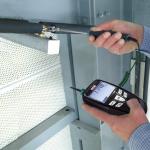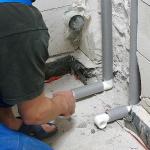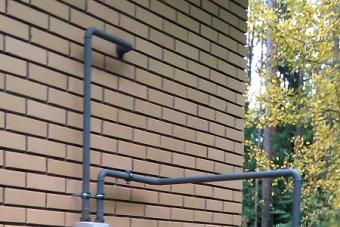Gas is the most popular fuel for heating systems. Gas heating is much cheaper than electric heating, and, at the same time, it brings much less hassle than solid fuel counterparts.
However, the very process of bringing explosive fuel to a private house requires compliance with a large number of rules associated with both paperwork and significant financial costs.
Laying gas pipelines is a long and expensive process. In order to reduce the cost of the entire process, some installation work can be done independently. But for this you need to carefully study the rules and norms of SNiP.
Content of the article
Procedure for gasification of a house
Everyone knows about the flammability, explosiveness, and also the chemical activity of natural gas, so there can be no talk of self-activity in this situation. Gas supply system must be installed exclusively by specialists according to the approved plan.
If you decide to bring gas to your home, get ready for a long paperwork, tune in to trips to various instances with long lines.
Before the team leaves for installation work, you will have to make a gasification plan, issue all permits, and only then purchase the necessary gas equipment.
Collecting the necessary documents
Before contacting a design organization to create a gasification project for a building, you will have to collect a whole package of necessary documents. We note right away that some of the required securities will cost money, so get ready for the financial costs right away.
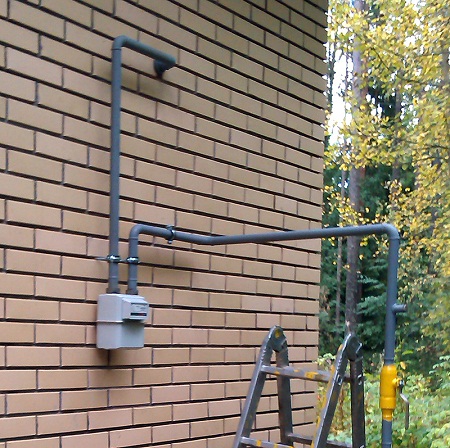
So, what kind of papers you have to collect:
- a document confirming the ownership of a house with a plot;
- copies of documents proving the identity of the owner;
- conclusion on the technical feasibility of carrying out work on gasification of the building;
- technical passport from BTI;
- topographic map, made at a certain scale, which shows all buildings subject to gasification;
- a map showing all laid communications and the planned gas pipeline, which is certified by the gas service;
- if the gas pipeline to the house has to be pulled through neighboring sections, written permission from their owners will be required to perform the corresponding work.
This is a rough list of the documents you will need to collect.
Depending on some features, for example, underground or aboveground gasification is planned, it may be necessary to provide some more papers.
Preparation of project documentation and conclusion of contracts
Please note that services for the preparation of project documentation are paid. This work can only be performed by design bureaus that have the appropriate license.
Trying to create a project on your own is not worth it, since it should take into account a large number of nuances known only to specialists:
- the depth of the central gas pipeline;
- the place and depth of the gas pipes from the central gas pipeline to the house;
- gasification methods (underground or aboveground). This is influenced by the characteristics of the soil, the depth of the groundwater, the interweaving of other communications, buildings, roadways, etc.;
- details of the installation work;
- points of connection of gas appliances and requirements for them in accordance with SNiP;
- materials, joints, as well as the distribution of gas pipes inside the house.
In addition, all project documentation must be certified by the appropriate organization.
The cost of work on the manufacture of the project will depend on the complexity of the project itself, the materials used and on the design organization itself. Therefore, it makes sense to consider all possible options, study prices, reviews, and then choose the most suitable bureau.
![]()
To carry out installation work and commission the gas supply system, you must also conclude the following contracts:
- The contract for the installation work and the preparation of technical documentation.
- Agreement on gasification and installation of gas equipment.
- The act of putting the gas pipeline and gas equipment into operation.
- Inspection report for smoke ventilation ducts.
- Agreement for the supply and payment of natural gas.
Selection of a contractor and start of installation work
When it comes to gasifying a building, the choice of a contractor must be taken with full responsibility. Before concluding a contract, make sure that the company has the appropriate licenses, contracts, necessary permits, qualified employees with all the necessary permits. Installation work on the installation of an underground or aboveground gas pipeline to the building begins after the preparation of all documentation.
However, it is the contractor who will have to provide reports on the work performed and acts, which will detail all the actions carried out on the site. Based on these acts, the gas service will have to connect the gas, carry out a series of commissioning works, and then give you a lecture on safety.
Features of materials and work on gas supply
When it comes to gas, in no case should you neglect the rules of SNiP on the choice of materials, equipment and features of installation work, since the gas is not only explosive, but also toxic.
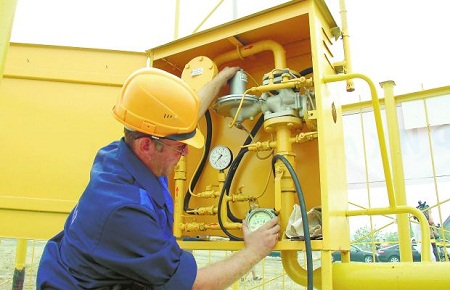
All materials that will be used in the process of supplying gas to the house and wiring inside the building, from pipes to electrodes, must be of high quality and appropriate certificates.
Low-alloy metal or polyethylene pipes can be used for gasification. It should be noted that polypropylene pipes have a number of advantages compared to metal: mother's weight, ease of installation, ease of transportation, corrosion resistance, electrical non-conductivity, reasonable cost, long service life.
- There are a number of restrictions for laying plastic pipes:
- overground gasification cannot be carried out using plastic pipes;
- the use of polypropylene pipes for indoor wiring is prohibited;
- use in regions where the temperature drops below -45 degrees is prohibited;
- it is forbidden to use on seismically active soils;
- do not use a plastic pipe to pass through natural or man-made barriers.
- No welded or gas pipelines are allowed to be embedded in walls or foundations. They should be located so that they are always accessible for inspection, maintenance and repair work.
- The elements of the gas pipeline must not come into contact with the combustible elements of the building - door frames, window frames, temporary partitions, etc.
- Distortions of the gas pipe are not allowed, either outside or inside the building. Vertical sections should run strictly vertically, horizontal sections should be laid with a slope of 2-5 mm per meter towards the devices.
- The gas riser can have a slope of no more than 2 mm. The riser is located in non-residential premises (change houses) or along the facade of the building. In no case can he be in places where people are usually located (bedroom, dining room, bathroom).
- Pay special attention to taps. They should be positioned so that the axis of the plug runs parallel to the wall.
Gas pipeline laying methods
The gas pipe from the central highway to the facade of the building can run underground or above its surface. Based on this, underground and aboveground gasification methods are distinguished. It should be noted that it is often necessary to combine these two methods.
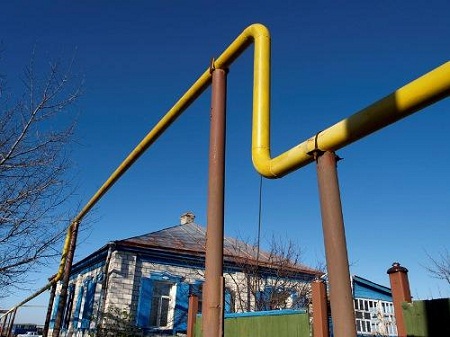
So, for example, if a gas pipe has to be pulled across the road, most often they resort to the above-ground method, so as not to block traffic for a long time. after passing the road, the pipe is deepened underground. However, if new horizontal drilling technologies are used, this need may disappear.
Overhead gas pipeline
An overground gas pipeline is much cheaper than an underground one. Savings, in some cases, can be up to 60%. If the gas pipe goes to the house above the ground, we will not be worried about the depth of the groundwater, or the interweaving of other communications, or other problems associated with underground work.
However, in this case, the pipes laid on must be protected as much as possible from corrosion, deformation, temperature extremes and mechanical stress.
In addition, you will have to constantly monitor that unscrupulous neighbors do not connect to your gas pipeline, which, in the case of an underground gas pipeline, is hindered by the depth of the pipe.
Stages of connecting gas to the house (video)
Underground gas pipeline
Although this technology costs much more, it is much more popular. When stopping at an underground gas pipeline, you need to remember that the depth of the pipe must be completely comply with the gasification plan for security.
Before the advent of horizontal directional drilling technology, laying gas pipelines underground was associated with a number of problems:
- depth of groundwater;
- seismically active soils;
- passing obstacles and road surfaces;
- soil with a high content of corrosive substances.
However, this technology solved all the problems at once, and, moreover, reduced the terms of work. Instead of a long process of digging a trench, the depth of which can reach 1.5 - 2 meters, a horizontal hole is drilled from the central highway to the building.
It is only necessary to dig two wells near the pipe, to connect to it, and near the building, to enter the house. The inlet and outlet of the drill is spilled with solution and. In the case of difficult soils, the pipe can be laid in a special protective case.

